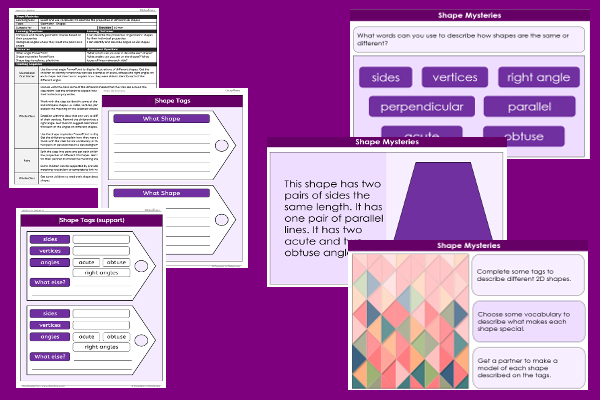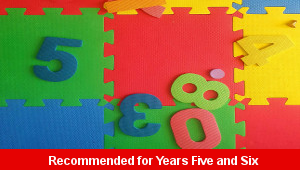Lesson One – Shape Mysteries

This maths teaching pack for Key Stage Two gets the children to select and use special vocabulary words to describe the matching individual properties of different 2D shapes including their types of angles.
The class can classify and record any acute, obtuse or right angles that can be found on different shapes to specify what makes them unique and different from other shapes.
Download this teaching pack including a lesson plan, classroom activities and an interactive presentation to select and use special vocabulary words to describe the matching individual properties of different 2D shapes including their types of angles
Activities in this teaching pack include a set of differentiated templates to select and use the correct vocabulary words to identify and record the matching properties of a range of different 2D shapes including any right, acute and obtuse angles.
The interactive presentation gets the children to explore how to use vocabulary words to describe the matching properties of different 2D shapes including types of angles.
This lesson is part of a maths scheme of work to get the children to explore and record the properties of different shapes by identifying, classifying and measuring a range of their matching angles. There are teaching activities for shared learning, differentiated worksheets to support independent learning and interactive presentations to introduce concepts and key skills.
-

Digit Combinations
Practise building and comparing a range of numbers by combining and matching sets of digits with different number values
-

Letter Strings Words Sums
Learn the meanings and practise spelling words with common letter strings to work with when composing example sentences on different topics and themes
-

Town Flag
Investigate and practise how to create different graphic shapes that can be utilised when producing a flag representing the local community
-

Three Digit Values
Investigate and compare the place value of the matching sets of digits in numbers to one thousand to indicate their hundreds, tens and ones values
